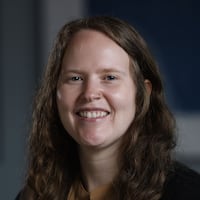“Giving students flexibility in choosing where and how they learn does have an impact. Students are more engaged learners, they feel empowered, have increased self-confidence, and report that it motivates them to improve, try new things, and advocate for themselves,” said Superintendent Michelle Patrick.
CTC students have full five-day school weeks, but they have flexibility to design their Fridays to meet their needs.
On certain Fridays, students can choose from:
—working virtually and self-managing their learning to complete assignments;
—learning that includes Future Ready Friday sessions to learn something new, get specialized help or tutoring; and
—work-based learning that includes job placement for seniors, who spend a portion of their day in supervised positions at a local employer related to their program of study.
“Future Ready Fridays are days that allow students to design their learning experience. (They) allow students the opportunity to discover new interests, explore passions, experience other CTC programs, and to develop skills to prepare them for the future,” Patrick said.
Patrick said a common theme among students is them feeling empowered when given choices. She said Future Ready Fridays are a form of choice where students learn additional skill sets, expand on those they are already learning, get help on assignments and more.
“It’s not just learning, it’s addressing the needs of the whole student,” she said.
Each Future Ready Friday offers morning, afternoon and all-day sessions that are geared towards providing opportunities in career, college and life readiness by developing skills beyond the classroom and preparing students for life after graduation.
If a Friday is not designated as a Future Ready Friday, the day follows a normal bell and class schedule.
As the school has learned more about alternative and innovative ways of teaching and learning, they implemented Future Ready Fridays. This doesn’t eliminate the traditional five-day week, but expands on it, said Pamela Noeth, senior director of Curriculum, Instruction and Innovation.
“This concept incorporates teaching and learning in what most perceive to be a traditional style of learning (i.e., five days of bell-to-bell schedules and within a brick-and-mortar setting), but it also allows students to expand upon the choice they’ve already made to attend our school by providing them with choices of additional learning content and platforms,” she said.
Future Ready Friday sessions change each time, but past sessions have included: community service; theatrical acting and vocal coaching; cyber networking in which students training or participating in cyber competitions; SkillsUSA advisors getting ready for competitions; students getting tutored help to catch up in classes; and students visiting colleges on their own or through organized trips.
Some other sessions have included self defense, hiking, foraging, ice skating, golfing, German culture and language, painting, cyanotype art, dancing, cooking, driver’s permit study sessions and drone flying.
“Learning takes place in a variety of locations and within a variety of platforms. As a school of choice, we have always embraced the notion that much of what is taught and learned here is different from traditional settings and therefore can and often must be learned in innovative, alternative ways,” Patrick said.
When it comes to work-based learning, nearly 30% of seniors participate in job placement. This type of learning is ongoing and happens both on and off campus.
For example, the culinary arts students run a restaurant, the cosmetology students run a salon, and several other programs have student-run businesses.
The off-campus work-based learning is job placement for seniors only where they work a minimum of 15 hours per week. In November, 72 students logged a total of 720 hours on job placement, which doesn’t include the on-campus hours worked. Last year, students on job placement earned over $800,000 in wages.
To make sure students who participate in virtual learning are accountable, each teacher and program still assigns classwork on those Fridays that must be completed and turned in for it to count toward their grade and attendance. At Future Ready Fridays, attendance is also taken to make sure students are held accountable for the session they signed up for.
Future Ready Fridays offer several benefits to both staff and students, officials said. They include staff sharing their passions outside of teaching, allow students to connect with staff they might not interact with, additional time to get help, ability to explore other programs, discovering new interests, developing new skills and adding to their resume.
There are a total of five asynchronous days and 14 Future Ready Fridays for the 2022-23 school year. For the first five Future Ready Fridays of this academic year, nearly 200 sessions had a combined attendance of 3,118 students.
Future Ready Fridays are a school-wide initiative that began in the 2021-22 school year, after two years of developing the concept and implementing logistics.
Before the coronavirus pandemic, the school started having conversations and being more innovative with its space, time and offering experiential learning experiences.
CTC’s Future Ready Fridays took shape and are modeled after ButlerTech’s 5th Day Experience.
“The network of administrators between Ohio’s 49 career centers is extremely collaborative — we share our successes and challenges openly and learn from each other,” Patrick said.
About the Author

